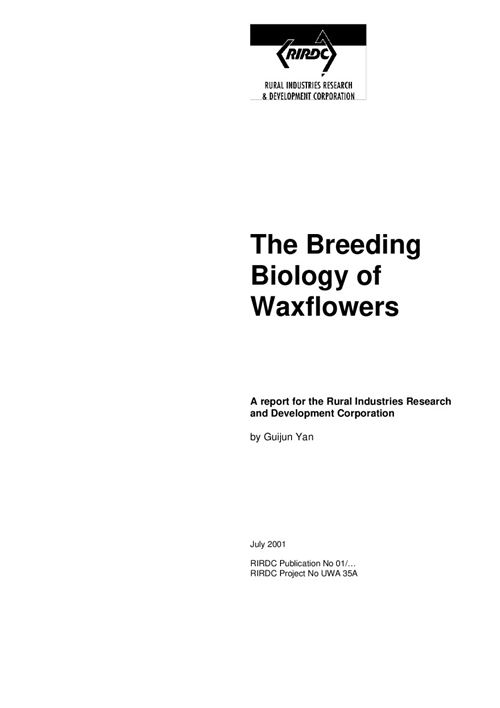The continued growth of Australian native plants as cutflowers depends largely on the breeding of new cultivars which are attractive, vigorous and productive, durable in transit and storage, resilient to pests and diseases, and with a greater seasonal spread of production. The understanding of the breeding biology is the key to success in these matters and can increase the breeding efficiency considerably.
With the support of RIRDC, a waxflower breeding program was initiated in Western Australia in 1995. This program aims at making wide hybridisations (interspecific and intergeneric) to produce new or novel cutflower cultivars for the Australia industry. The study of the breeding biology in Waxflowers is an integral part of that program.
This publication considers the breeding biology of waxflowers (Chamelaucium) with special emphases on chromosome numbers, ploidy levels, ploidy manipulation, chloroplast DNA inheritance, identification of natural and artificial hybrids, hybridisation barriers, embryology and early embryo rescue. It discusses how this information and methodologies can be used in waxflower breeding programs to increase the breeding efficiency.




